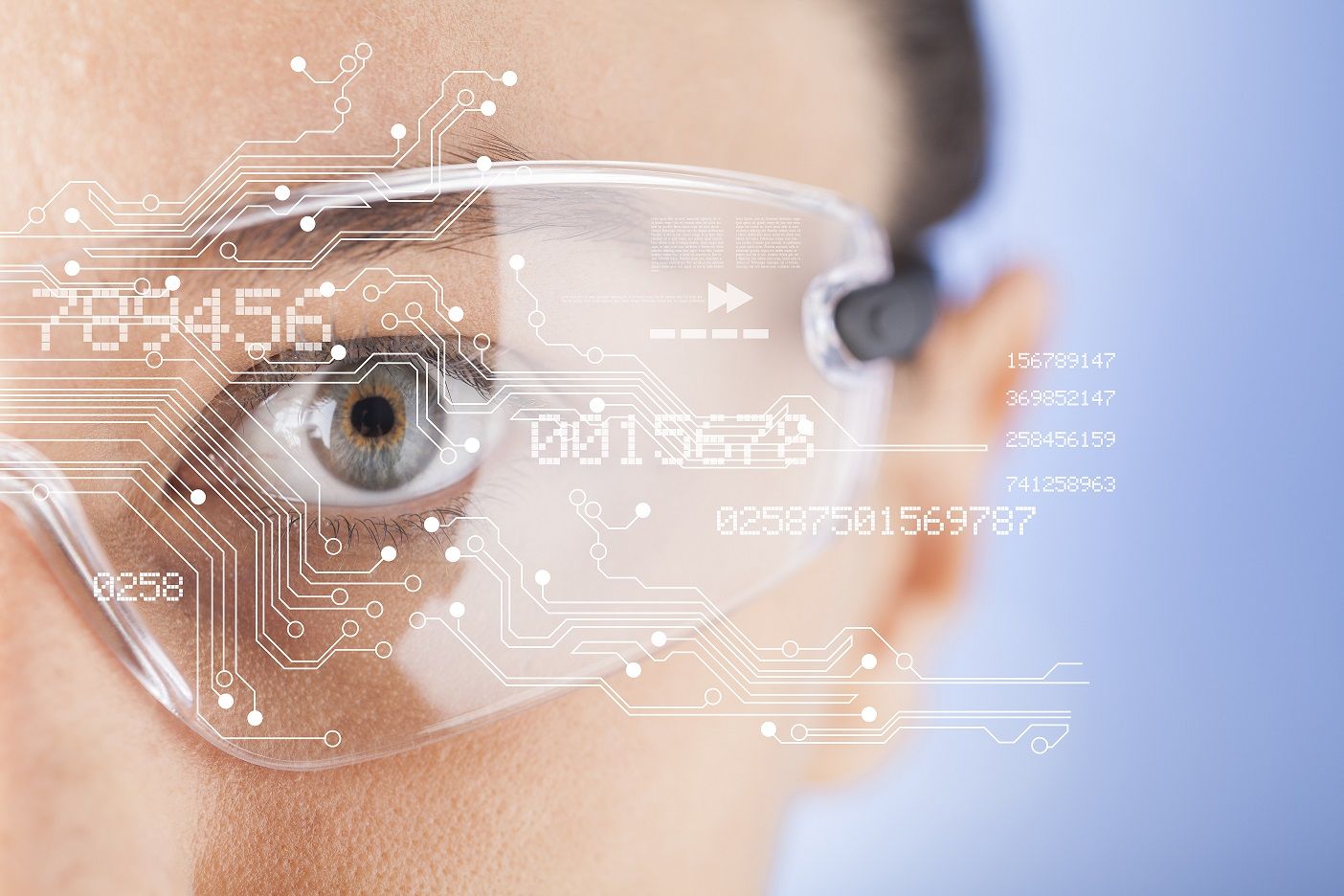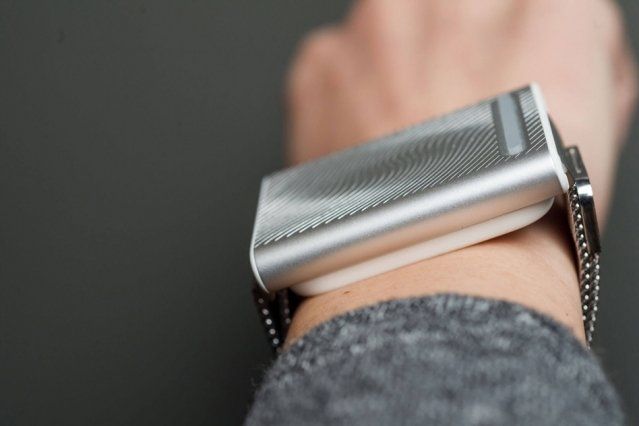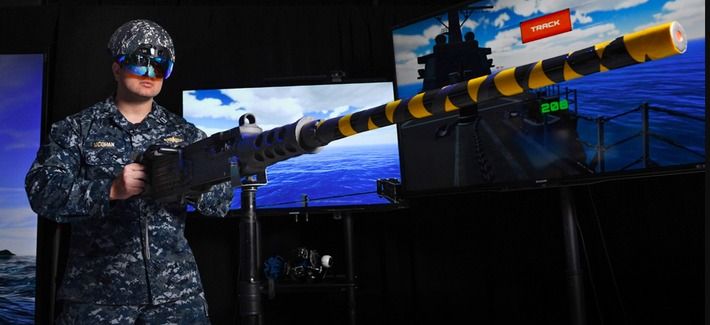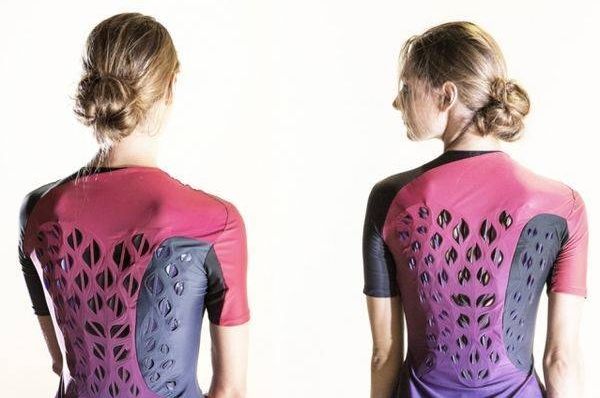Toyota envisions smart cars and wearables saving lives in car crashes by working to predict heart attacks or diabetic blackouts among drivers.



Tattoos are fast becoming more than just a means of self-expression: soon they could be used for more practical applications, like tracking blood alcohol levels or turning the skin into a touchscreen. Now, a team from Harvard and MIT has developed a smart ink that could make for tattoos that monitor biometrics like glucose levels, and change color as a result.
Currently, bodily biomarkers can be monitored through a wardrobe-load of wearables, but they usually need batteries for power and wireless communication systems to transmit data. Using biosensitive inks (bio-inks), the Harvard and MIT design is self-contained, and since it works on simple chemical reactions it doesn’t require power for any data processing or transmission.
The inks interact with the body’s interstitial fluid, which transfers nutrients into cells and carries waste out of them. The fluid works closely with blood plasma, meaning it acts as a decent indicator of the chemical concentrations in the blood at a given time.

Cool Wearable! Actually does something useful & could help reduce energy waste.
Sitting in a stifling subway car or walking Boston’s cold winter streets may soon become more bearable, thanks to a “personal thermostat” wristband being released by MIT spinout Embr Labs.
For a design competition in 2013, four MIT engineering students created a smart wristband, called Wristify, that makes its wearer feel warmer or cooler through its contact with the skin on the wrist. After much fanfare, and a lot of research and development, the wristband will hit the shelves early next year.
The wristband, now called Embr Wave, has a flat aluminum top that includes a colored display users adjust from blue to red, to provide cooling or warming, respectively. The device works because the wrist is one of the most thermally sensitive parts of body. It’s also an area where people are most comfortable putting new wearable technologies.
NEWPORT BEACH, Calif., July 12, 2017 /PRNewswire/ — Strathspey Crown LLC, a lifestyle healthcare company focused in ophthalmology, medical aesthetic and elective technologies and procedures, today announced that the United States Patent and Trademark Office has issued U.S. Patent No. 9,662,199 covering an implantable intraocular lens with an optic (including accommodating, multifocal and phakic configurations), a camera and an LED display, and a communications module that wirelessly transmit and receive information from an external device (e.g. PDA).
Robert Edward Grant, Founder and Chairman of Strathspey Crown LLC commented, “Video cameras are now a standard feature of smart phone technology and wearable cameras have become popularized by companies like Google and Snap in recent years. This patent represents a significant step forward in the rapidly growing sector of human cyborg technology. The eye, as a transparent medium for light, is ideal for advanced and rechargeable implantables that enable video capture of all of life’s experiences. Our broader vision is to develop ground-breaking medical-grade ocular smart implantables that integrate cellular, WIFI and 802.11 transmissions in an elegant cognitive interface that we believe will enhance human intelligence, augment perceived reality, and digitally capture experiences and individual memories. We look forward to several continuations and expansions on this important intellectual property portfolio.”
Grant further commented, “Although Samsung, Sony and Google have all recently filed patent applications related to the same field, Strathspey Crown is thus far the only company to hold an issued patent in this promising ocular smart implant category. Our first camera-integrated acrylic IOLs will be completed in 2018, upon which we plan to pursue an FDA Investigational Device Exemption (IDE) and subsequent Pre-Market Approval (PMA) and related clinical trial.”

A service lab has turned a lieutenant’s brainstorm into a testable prototype dubbed the GunnAR augmented-reality headset.
In just a year, a wearable headset designed to help U.S. Navy gunnery sailors cut through the fog of combat has evolved from a lieutenant’s brainstorm to a prototype being tested in various exercises.
Conceived by a junior officer aboard the destroyer Gridley, the idea for GunnAR was presented at last year’s ONR Innovation Jam, where it received first prize — and $100,000 to make it real. After rapid progressions through various development milestones, the blue-tinted visor was put to the test in the Trident Warrior 2017 experiment aboard USS Bunker Hill, where sailors used it to put live fire on targets.
ELF emmit is the world’s first wearable mind stimulating headband, based on pulsed electromagnetic technology. Operates in five different modes: Sleep, Anti-stress, Superlearning, Concentrate, Meditate. Designed to assist you in every area of life. Powered by smart phone or tablet. Operated by free mobile application.

The age of the cyborg may be closer than we think. Rapidly improving medical robotics, wearables, and implants means many humans are already part machine, and this trend is only likely to continue.
It is most noticeable in the field of medical prosthetics where high-performance titanium and carbon fiber replacements for limbs have become commonplace. The use of “blades” by Paralympians has even raised questions over whether they actually offer an advantage over biological limbs.
For decades, myoelectric prosthetics—powered artificial limbs that read electrical signals from the muscles to allow the user to control the device—have provided patients with mechanical replacements for lost hands.

Many rain jackets have zippers at the armpits that, when opened, let out perspiration and funk that would otherwise stay trapped inside. But researchers from the Massachusetts Institute of Technology have created a prototype of a wearable that vents itself automatically in response to sweat—and it does so using bacteria.
Wen Wang, the lead author of a new study about biohybrid wearables in the journal Science Advances, says that the garment with bacteria-triggered vents represents just a stepping stone on their way to creating shirts that do something even better: produce a pleasant smell when you sweat.
To make the prototype garment, the researchers experimented with different structures of latex and bacteria, says Wang, a bioengineer and former research scientist at MIT’s Media Lab and the university’s department of chemical engineering. One such configuration involved just two layers: bacteria on one side, and latex on the other. But what worked best for creating the vented wearable was coating latex on both sides with a type of bacteria called B. subtilis.